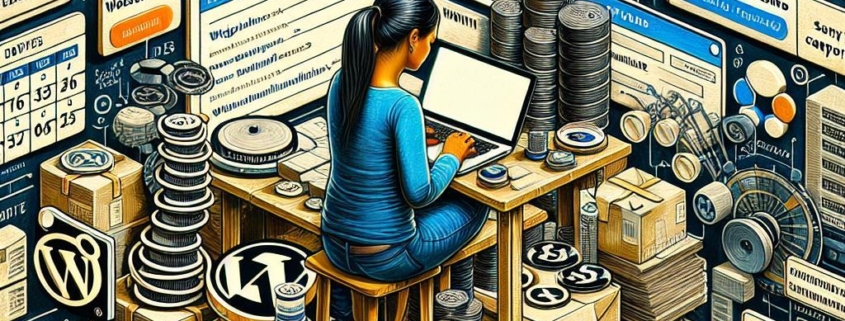How to Keep Your WordPress Site from Becoming a Hot Mess
WordPress runs, what, like a third of the internet? Maybe more? Whatever, it’s a lot. If you’ve got a site, you can’t just leave it on autopilot and hope for the best. A neglected site gets slow, vulnerable, and just plain awful for visitors. Want to keep yours running smooth without losing your sanity? Here’s how.
Contents
- 1 Updates—Seriously, Just Do Them
- 2 Backups—Your Future Self Will Thank You
- 3 Security—Because Hackers Are the Worst
- 4 Check Your Site’s Performance—It’s Not a Set-It-and-Forget-It Deal
- 5 Why This Actually Matters
- 6 Tools to Make Your Life Easier
- 7 Thinking of Outsourcing? Here’s What It’ll Cost
- 8 Staging—Test Before You Wreck Your Site
- 9 The Bottom Line
Updates—Seriously, Just Do Them
Updates aren’t just suggestions, they’re must-dos. WordPress core, themes, plugins—when new versions drop, they’re usually fixing security holes or improving speed. Ignore them, and you’re basically rolling out the welcome mat for hackers. Plus, slow sites get buried by Google. Keep up, or pay the price.
Backups—Your Future Self Will Thank You
Do yourself a favor and back up your site. Files, database—the whole thing. If something crashes or some hacker decides to wreck your day, you’ll be glad you did. How often? If you’re running an active site, daily. For a casual blog, weekly should be fine. Just don’t be the person crying over lost content.
Security—Because Hackers Are the Worst
WordPress is a prime target, so don’t make it easy for the bad guys. Lock it down:
- Limit login attempts (don’t let them guess forever).
- Use strong passwords (seriously, not “password123”).
- Enable two-factor authentication (a pain, but worth it).
- Install a security plugin like Wordfence or Sucuri—firewalls and malware scans keep threats out.
Check Your Site’s Performance—It’s Not a Set-It-and-Forget-It Deal
Ever wonder how well your site’s actually running? Check it. Tools like GTmetrix and Google PageSpeed will tell you if it’s dragging. A slow, glitchy site drives visitors away and tanks your search rankings. Stay on top of it, and fix issues before they turn into real problems.
Why This Actually Matters
This isn’t just busywork—it’s what keeps your site secure, fast, and ranking well. A slow, outdated site makes you look unprofessional, and people won’t stick around. Keep it running smoothly, and it works for you, not against you.
Tools to Make Your Life Easier
You don’t have to do everything manually. These will save you time:
- Backups: UpdraftPlus (automatic cloud backups).
- Security: Wordfence or Sucuri (firewall + malware protection).
- Speed Checks: Pingdom, GTmetrix (see what’s slowing you down).
- SEO Help: Yoast (keeps your keywords and rankings in check).
Thinking of Outsourcing? Here’s What It’ll Cost
If you don’t want to deal with maintenance yourself, hiring a pro is an option. Costs vary:
- Basic maintenance: $50–$200/month (updates, security, backups).
- Bigger sites: $200–$500/month (e-commerce, complex needs).
- Hourly rates: $50–$150, depending on expertise.
Shop around and don’t overpay for the basics.
Staging—Test Before You Wreck Your Site
Want to avoid breaking your site with updates? Use a staging site—a test version where you can try changes before pushing them live. If something goes wrong, no big deal. It’s an easy way to prevent headaches.
The Bottom Line
WordPress needs regular maintenance—updates, backups, security checks, speed monitoring. Either stay on top of it or hire someone who will. A slow, outdated site is a nightmare, but a well-maintained one? That’s gold. Keep it fresh, keep it fast, and keep it looking legit.



